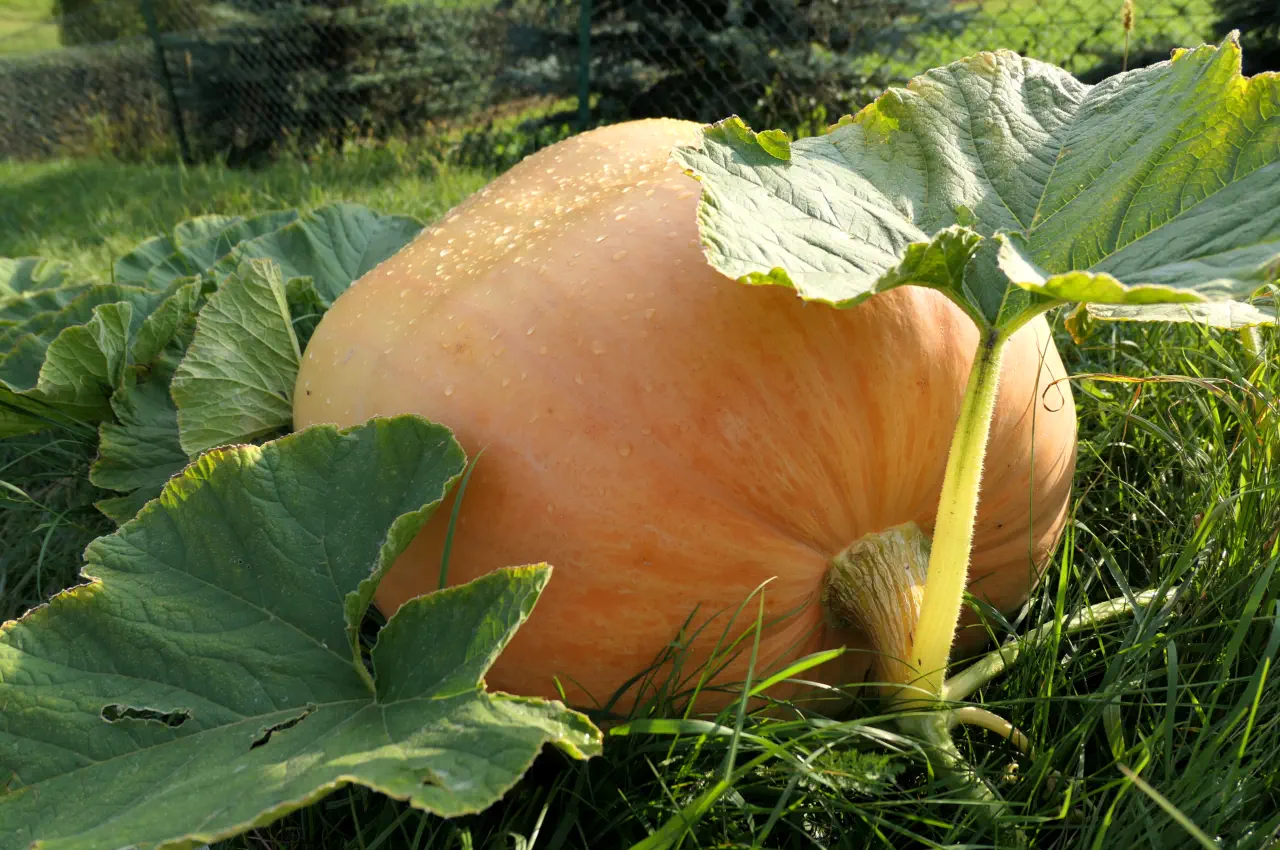Pak Choi is grown for its tasty leaves which are superb when added to stir fries and salads.
The taste is similar to that of mild cabbage and spinach and is a popular addition to many oriental dishes.

Growing giant pumpkins can be an exciting and rewarding challenge that will transform your vegetable garden into something truly unique.
With the right steps, it's easy to achieve a successful harvest. Learn about the different giant pumpkin varieties, and how to properly care for and train your pumpkin plant.
Firstly, choose the best quality seeds from a reliable seed supplier. Soak the giant pumpkin seeds in tepid water for around 30 minutes before sowing.
Secondly, use a pot with ample drainage holes and fill it with a light, free-draining compost. Plant the seeds individually, pointy end down, just under the surface to prevent waterlogging.
Thirdly, keep the seeds in a warm and bright location for germination, with an optimal temperature of 20 to 24 degrees. Usually, the seeds will germinate within a week or two, but common germination issues can delay the process.
Lastly, be sure to keep the soil moist, but avoid overwatering, and be aware of pests.
Compost with higher nutrient levels, such as well-rotted horse manure or enhanced green compost, should be used. Organic fertilizers should also be used to give the soil an extra boost.
Crop rotation is an important part of soil health, and it can help to add new nutrients and provide a beneficial environment for the pumpkin. Companion planting can also help with nutrient absorption, as many plants can help to add nitrogen to the soil.
Dig a hole that's 50cm diameter for planting. Fill the hole with compost or well-rotted manure, and the soil should end up slightly mounded.
Early Growth and Transplanting
To ensure your pumpkins flourish, keep them warm in a greenhouse or coldframe. This helps keep the environment around the plants stable, and also provides protection from frost.
Transplant your seedlings into larger pots of compost when their roots start to come through. This will give them more space to grow. Different composts can also give your pumpkins added nutrients. Consider using well-rotted horse manure for fast soil warming, or enhanced green compost with food waste for higher nutrient content.
Plant outside once the risk of all frost has passed, usually end of May or beginning of June.
Fruit development is essential for successful pumpkin growing. Look for female flowers with a small pumpkin at their base, and choose a female flower on the main vine far from the stump. Pollinate the flowers with bees or manually. Allow only one fruit on the plant to ensure it grows to a large size. Be careful not to damage the pumpkin's delicate skin, as scratches can affect its size.
Watering the pumpkins daily will help maximize their size and keep them healthy. To prevent pumpkin rot, avoid wetting the plant's leaves.
When it comes to proper pumpkin watering techniques, keep the soil moist but not soggy. Consider watering the plants in the morning to reduce evaporation. If needed, use a mulch to help retain moisture in the soil. To enhance pumpkin fruit development, remove any further flowers once three fruits have started to form.
When the pumpkin reaches football size, place it on its side on a bed of straw.
The most popular varieties in the UK are Atlantic Giant, and Mammoth, which are each genetically huge. When purchasing these seeds, you should expect them to be larger than normal pumpkin seeds.
When selecting a variety, it's important to consider the growing conditions. Giant pumpkins need lots of sun and warmth, with shelter from wind and frost. As the pumpkin grows, raise it off the ground using a wooden board, and protect it from heavy rain and strong winds.
With the right seed selection, soil preparation, and growing techniques, you can achieve impressive results in giant pumpkin competitions.
Are you overwintering your chilli plants? Let us know how you get on with a comment below....
All blog content on this page is copyright of SimplySeed and is not to be reproduced without prior written permission. ©